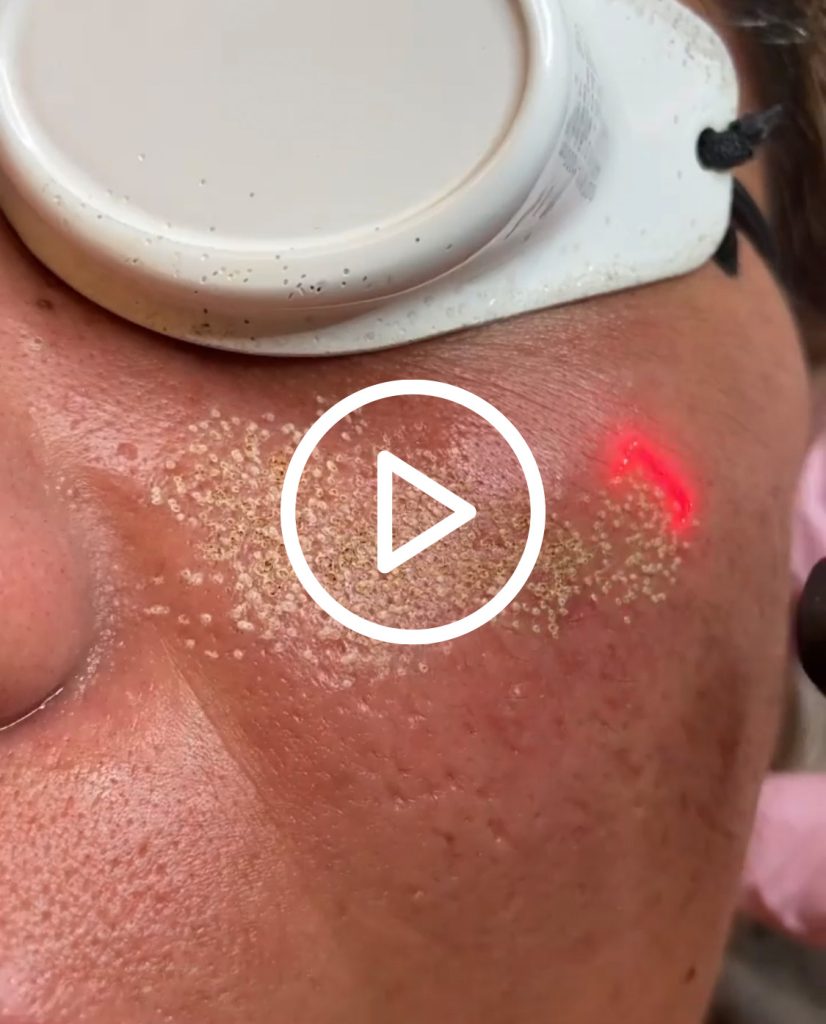Remove pigment spots
With the help of the fractionated CO2 laser or IPL laser
Everything at a glance
- Application: Treatment with the IPL laser can be carried out all year round (in combination with sun protection factor 50+).
- Treatment duration: 5 to 20 minutes | 25 minutes before the treatment a local anesthetic ointment is applied
- Anesthesia: local anesthetic ointment (in extensive cases) | icing spray (for smaller areas)
- Aftercare: application of a post-laser cream in the surgery | wound cream for 7 days after the treatment | consistent sun protection for 6 to 8 weeks is important for optimum results
- Sociability: slight pigment spots after treatment (can be easily covered with antibacterial camouflage; available in our practice) | redness in the first 2 to 3 days after treatment | slight flaking between the 3rd and 5th day > healing ointment is recommended
- Visibility of the results: first results after the first treatment | approx. 2 weeks after the treatment you can admire the complete result
- Durability of results: long-lasting or permanent (if special whitening cream is used every other evening)
How do pigmentation and age spots form?
Even if we know nothing but taut, flawless skin from the media – sooner or later, everyone makes the acquaintance of light to dark brown discolored areas of skin of various shapes and sizes, so-called pigment spots, which are caused by an overproduction of melanin.But moles in exposed areas, pigment spots on the face or décolleté, dark age spots on the hands and shoulders are also an unpleasant cosmetic problem for many of those affected.
Pigment disorders and pigment spots can be found in almost everyone!
The reasons for hyperpigmentation vary: on the one hand there are birthmarks that are already present from birth, on the other hand there are those that only develop over time. These include freckles or pigment spots, which can occur primarily on the upper lip, cheeks and forehead as a result of hormonal factors during pregnancy (chloasma) or are also due to the use of medication. However, pigmentation disorders also often occur with injuries or inflammatory skin diseases. Acne patients are very frequently affected.
Age spots, which usually appear as small dark spots on the back of the hands, arms, shoulders and face, are the result of excessive exposure to ultraviolet radiation from the sun.
What are hyperpigmentations actually?
This refers to an “excess” of pigment accumulation in the skin, especially in areas of the body that are frequently exposed to the sun, such as the forehead, upper lip area, cheeks, décolleté and arms. Depending on the cause of the hyperpigmentation, a distinction is made between age spots, lens spots, melasma and post-inflammatory hyperpigmentation.
Lens spots: These are caused by pigment accumulation due to too much sun or sunburn.
Age spots: From the age of 30, our melanocytes can no longer distribute the pigment evenly in the skin (“ageing phenomenon of melanocytes”), which means that they release melanin more intensively to some skin cells than to others: this is how the unloved first “age spots” appear – typically the size of a lentil and on the face, décolleté and arms (back of the hand).
Melasma: a very special, stubborn form of hyperpigmentation, as the “too much” pigment can accumulate in deeper layers of the skin (dermis). The cause here – in addition to a genetic predisposition – can usually be found in our hormones: hormonal contraception (pill, coil) or a previous pregnancy can be the trigger for melasma.
Post-inflammatory hyperpigmentation: These are small, healed injuries or inflammations in the skin such as pimples, insect bites, etc., which eventually heal into dark pigmentation.
This applies to all forms of pigmentation disorders:
Only clearly benign skin changes are treated with laser, peelings or bleaching cream! (If malignant skin changes are suspected, they are immediately surgically removed and histologically clarified).
BEFORE-AFTER results
BEFORE
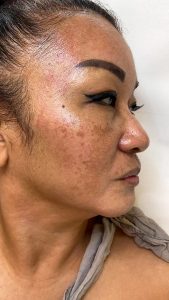
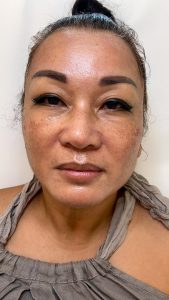
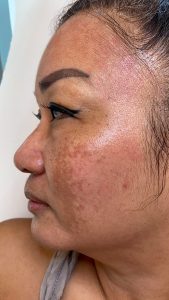
AFTER
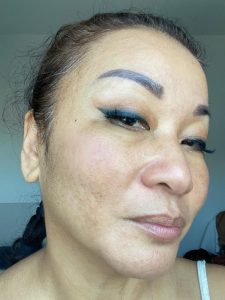
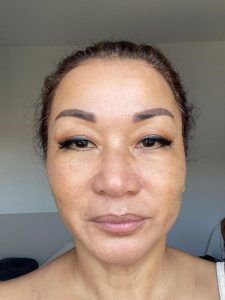
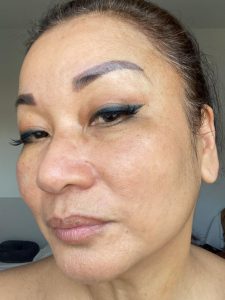
BEFORE
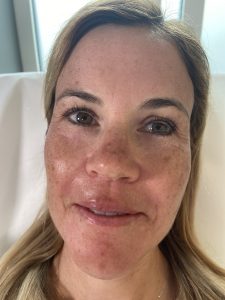
IMMEDIATELY AFTERWARDS
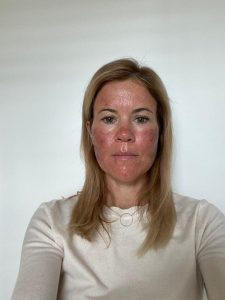
AFTER
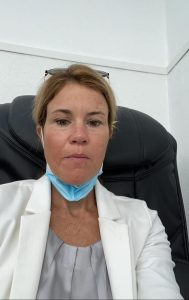
BEFORE
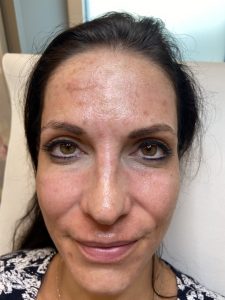
AFTER
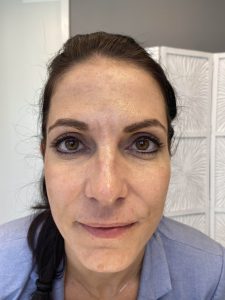
What exactly happens during the treatment?
Depending on the diagnosis, peelings and/or bleaching creams are used before the laser treatment, the skin is cleansed and any hair is removed.
When removing individual pigmentation spots, the surrounding skin is covered so that only the pigment is captured by the laser. In the case of extensive pigmentation, e.g. especially in the facial area, a local anesthetic gel is also applied to the skin before the laser treatment.
In the case of superficial pigment – i.e. treatment with ILP lasers – the pigmented area in the skin is broken up into several small pigments so that these can be absorbed by the body’s own scavenger cells and then broken down.
In the case of deeper pigment, fractional CO2 laser technology is used to create tiny wound channels in the skin, which “thin out” the pigment. This results in intensive wound healing and the release of growth factors, which also slightly tightens and firms the skin.
In the case of very dark or deeply embedded pigment, an ablative procedure is used, i.e. pigment is removed step by step in layers using a CO2 laser.
During the laser treatment, the patient only feels the heat of the light. It is not usually necessary to anesthetize the skin. For extremely sensitive skin areas and high sensitivity to pain, an anesthetic substance can of course be applied at the patient’s request to make the treatment as comfortable as possible.
The skin is cooled after the treatment. This soothes it and minimizes any redness that may occur.
The following areas and skin problems can be treated:
- Scars (after acne, OPS or burns)
- Pigmentation disorders of any kind on the back of the hands, arms and face
- Sun damage
- Wrinkles on the face and around the sensitive skin area
- Large-pored skin
- Milia (annoying sebaceous inclusions under the skin)
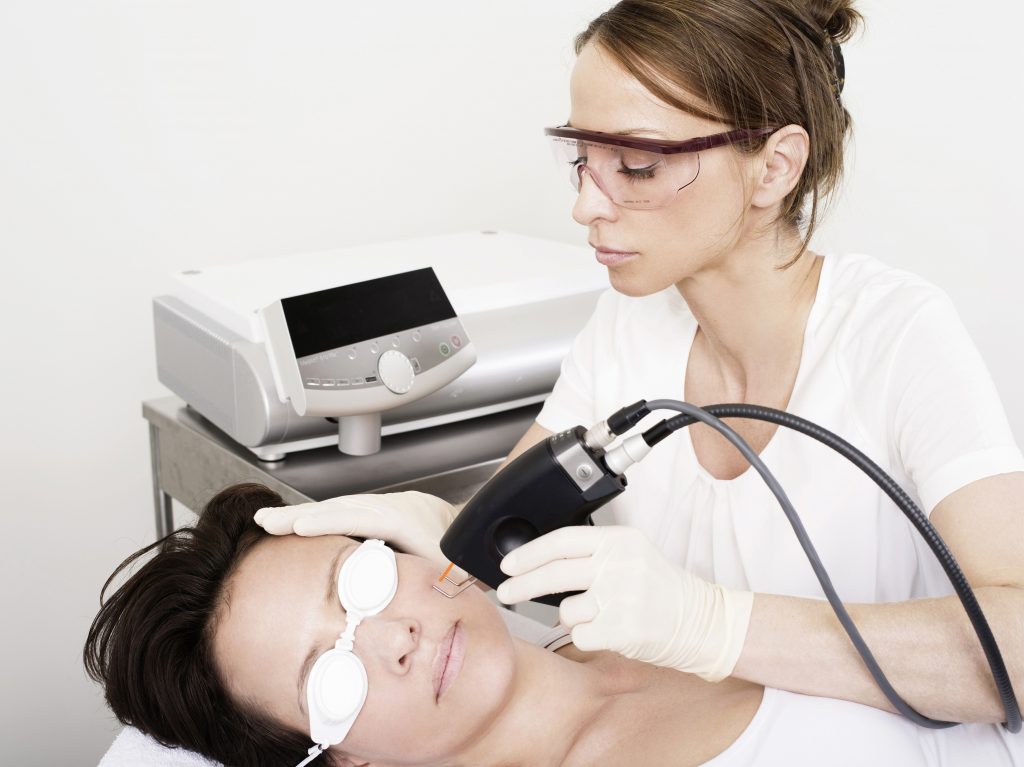
Fractionated CO2 laser for the removal of warts, age spots and skin changes
The individual treatment of cosmetically disturbing, benign skin tags and warts/age wartsis carried out using a CO2 laser. The current and innovative form of therapy to remove skin changes under local anesthesia within a few minutes – without sutures.
The aesthetically pleasing result is very important to me!
After an individual consultation, I can determine whether this application is an option. Only certain skin tumors allow this type of removal:
- Fibromas: (protruding tumors of the skin that are soft and hang down like small bags on the neck, armpits or in the genital area)
- Benign birthmarks
- Warts
- Age warts
- Condylomas
- Xanthelasma
- Syringoma
Modern laser technology for soft, smooth and radiant skin
I work with both fractional CO2 lasers and IPL lasers to successfully treat the many small wrinkles typical of the face (“elastase”) and neck. These innovative laser treatments make it possible to vaporize the skin in the form of microscopically small heat columns or to tighten the skin over a large area.
New collagen is formed!
There is also a shrinking effect: existing collagen bundles contract strongly. Fresh, new skin is formed, which refines the overall skin texture.
The result is soft, smooth and radiant skin.
Important FAQs on the treatment of pigment and age spots
As the skin is very fresh and sensitive after the treatment, you should avoid extensive sunbathing for a few weeks. In addition, not only should sun creams with a high sun protection factor be used to avoid further UV-induced hyperpigmentation, but also appropriate day creams with a high sun protection factor should be used to keep the treatment results fresh for as long as possible.
